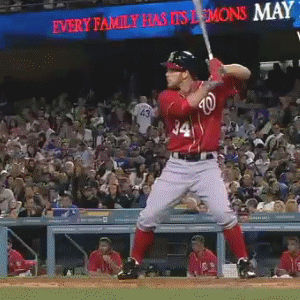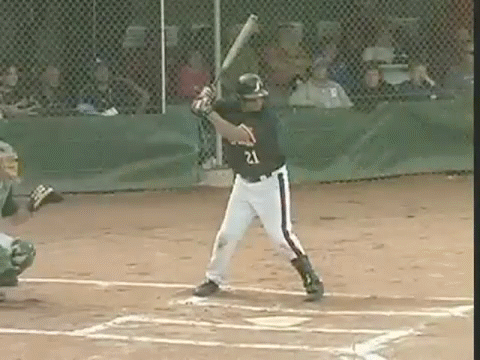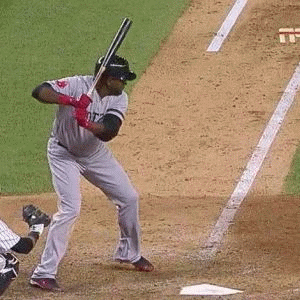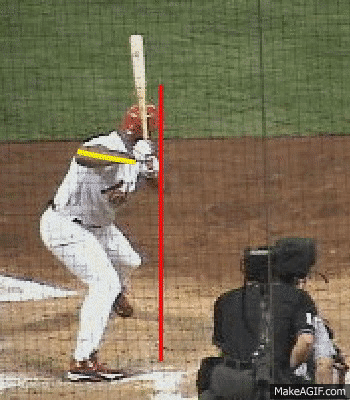...It's been said that Harper got rid of the 'ER of the rear humerous'.
New(this is a gif you made & posted else where):

Older:

He got rid of this:

"Knob to ball" kills external rotation of the shoulder and further stretching of the serratus anterior. He loses the benefit of a priceless timing window during overlap. He limits the ability to strike down to any quadrant or latitude of the strike zone. He has learned to externally rotate the shoulder (and humerus) in his new swing: He found the scapula.
Notice the relationship between the top hand and rear elbow in the drill and in his old swing. What does he do in the new swing that is noticeably absent in the former?
ANSWER: He gets into the "swearing in" position.
Red to Blue: Overlap, (aka "missing frames","running start"). External rotation of the rear shoulder by trapezius and rotator cuff muscles counter the pull of the rear knee turning inwards. This gets the rear hip to pull, as the latissimus dorsi muscle induces the arm to adduct, i.e.. slot. Forearm and hand assume the "swearing in" position: The hand set remains high in proximity to the rear shoulder despite lowering of the rear elbow. The hand set resists the influence to go forward because the scapula holds the rear shoulder in external rotation. The serratus anterior is maximally stretched …















